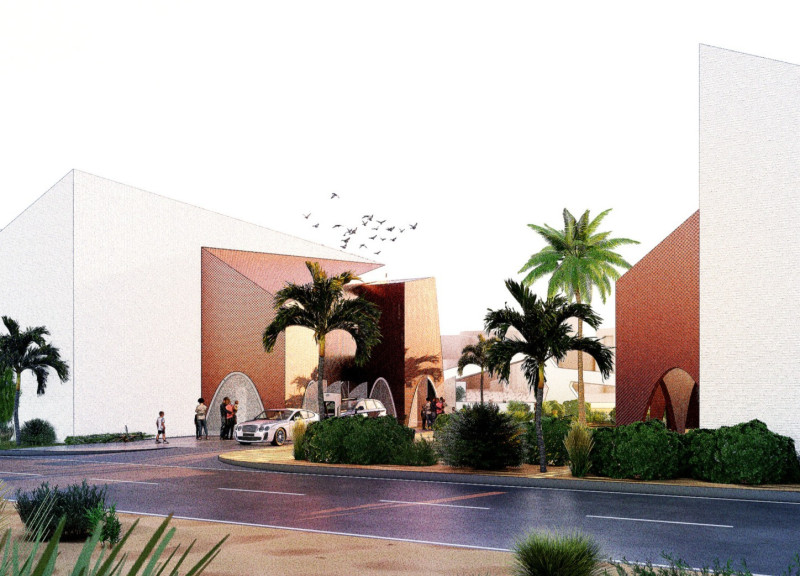5 key facts about this project
At first glance, the architectural design embodies modern principles while respecting the historical and cultural nuances of its surroundings. The project’s layout facilitates a flow that encourages exploration and use of space, featuring multiple entrances and open areas that allow for easy access. This design strategy not only enhances the overall functionality but also ensures that the building sits harmoniously within its environment.
The architectural language of this project is characterized by clean lines and a minimalist approach that emphasizes simplicity and functionality. The use of large windows plays a pivotal role in the design, washing the interior spaces with natural light and offering views of the surrounding landscape. This connection to nature enhances the mood and experience of the occupants, creating an inviting atmosphere that is conducive to both work and leisure.
In terms of materials, the project utilizes a carefully selected palette that speaks to both durability and sustainability. Concrete, steel, and glass are predominant across the façade, providing a modern aesthetic while ensuring longevity. The concrete elements establish a solid foundation and structure, while the steel accents add a touch of elegance and strength. Glass, utilized extensively in the façade, not only contributes to the transparency of the building but also engages with the environment, reflecting and refracting light throughout the day.
Landscaping elements are equally significant to this project. The integration of green spaces, gardens, and outdoor seating areas enhances the site’s allure and promotes wellness. These landscaped regions are not merely decorative but are designed to encourage outdoor activities. The landscape architecture fosters a connection to nature, reinforcing the project's sustainable ethos by incorporating native vegetation, which requires less maintenance and resources.
This project represents a unique design approach, prioritizing adaptability in its use. Spaces within the building can easily be reconfigured to suit various functions, from community gatherings to individual activities. This flexibility is a crucial aspect of the architecture that addresses the ever-changing needs of the community.
The incorporation of technology is noteworthy, as the project integrates smart building systems that enhance energy efficiency and provide comfort to its users. These systems manage heating, cooling, and lighting based on occupancy and natural light availability, demonstrating a commitment to reducing the project's environmental footprint.
In addition, the design takes into consideration the surrounding urban fabric by promoting pedestrian pathways and bicycle access. The approach of creating a walkable environment aligns with contemporary urban planning principles, aiming to reduce reliance on automobiles and foster a healthier lifestyle for the community.
This architectural design project embodies a meticulous balance between form and function while respecting its context. It stands as a testament to thoughtful planning and innovative design, with an emphasis on sustainability, community interaction, and aesthetic harmony. Readers interested in understanding the complexity of this project should explore the architectural plans, sections, and other design elements that offer valuable insights into the architect’s vision and execution. This project is a prime example of how effective design can positively influence community dynamics and the architectural landscape as a whole.


 Nour Ali El-souri
Nour Ali El-souri 























